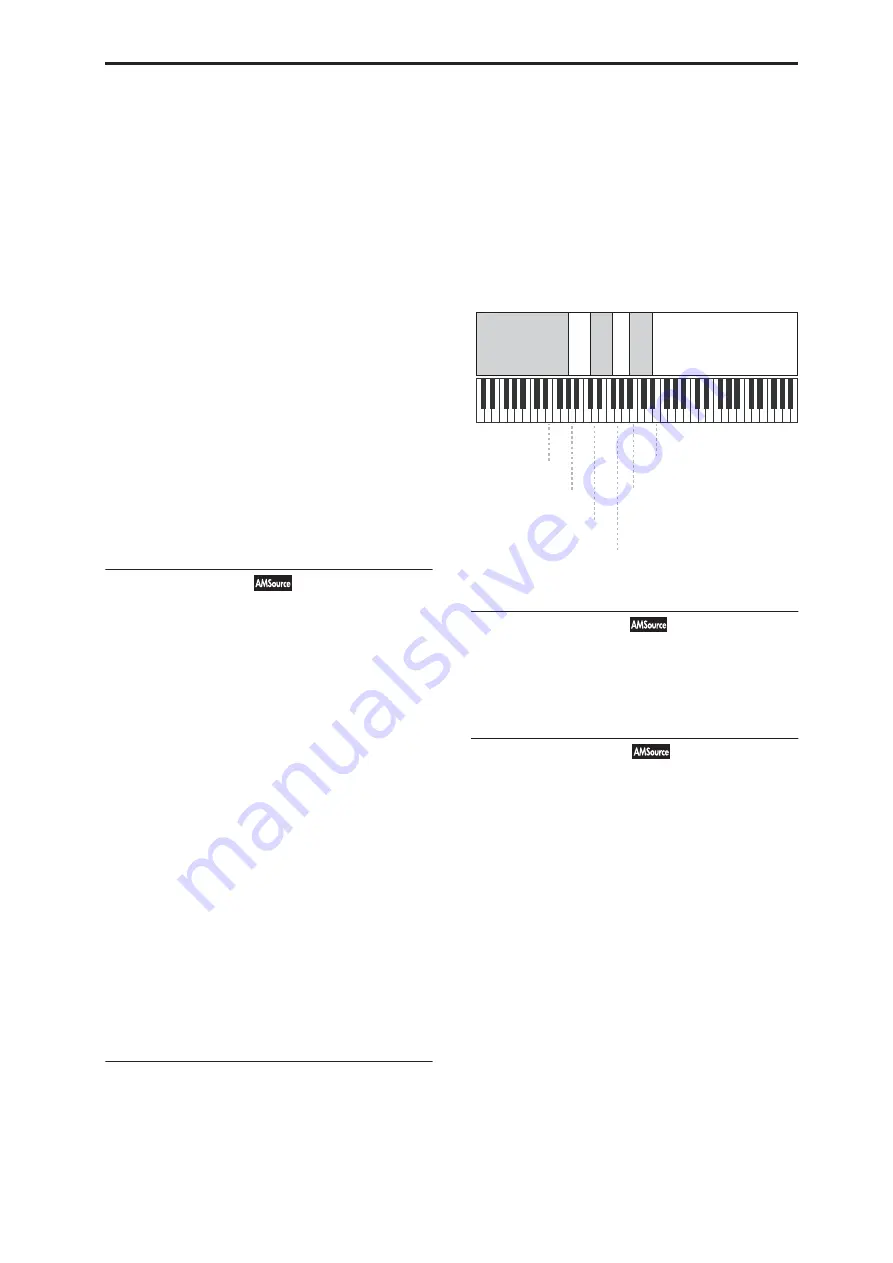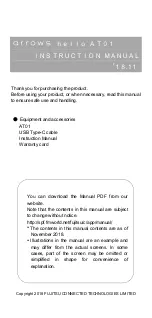
Program P9: AMS Mixers and String Track 9-9: String Track
277
This means that some strings may sound very distinct
from others, quite aside from the differences in pitch.
It’s almost as if each string was a sub-instrument of its
own.
In order to physically model these differences, it’s
sometimes helpful to modulate certain parameters
separately for each string, such as
Damping
,
Decay
,
Dispersion
,
Inharmonicity
, etc.
String Track lets you do exactly this. It’s a variation of
keyboard tracking, which divides the keyboard into 6
zones, corresponding to 6 strings. You can then set four
different offsets for each string: one each for
Damping
and
Dispersion
, and then the two general-purpose
String Track 1
and
2
. All four can be used as AMS
sources throughout the STR-1.
Fret Number AMS Source
Strings may also change in timbre as you move up the
neck, playing higher and higher notes. To model this,
you can use an additional AMS source,
Fret Number
.
Fret Number
provides the distance up the neck for the
current note. When the note is an “open string,”
Fret
Number’s
value is zero. As notes move up the
fretboard,
Fret Number
increases. Once the next “open
string” is reached,
Fret Number
goes back to zero, and
starts over again.
9-9a: Fret Position
Fret Position
[Open, 1…48]
This controls the position at which the notes are played
along the neck. This can have a significant effect on the
timbre, since it may change the string on which a note
is played.
To do this,
Fret Position
shifts the relationship between
notes played on the keyboard (or via MIDI) and the
selected String pitches. This changes the break-points
for all of the String Track generators at once.
This means that as the
Fret Position
increases, the
same note will be played in higher positions on the
neck, using lower strings.
The current fret position (in other words, the
combination of
Fret Position
and its AMS) is itself
available as the AMS source named, appropriately,
Fret
Position
.
AMS
[List of AMS Sources]
This selects a modulation source to control the
Fret
Position
. For a list of AMS sources, see “AMS
(Alternate Modulation Source) List” on page 967.
Intensity
[-48…+48]
This controls the depth and direction of the
Fret
Position
AMS modulation.
9-9b: Strings
Strings 1-6
[C–1…G9]
These six parameters set the pitches of the strings, from
the lowest pitch (String 1) to the highest pitch (String
6). These define keyboard zones, as shown below.
The same String settings are used for all String Track
generators, including those for Damping and
Dispersion. They are also used for the Excitation,
Harmonic, and Pickup positions when their
Tracking
Mode
parameters are set to
String Track
.
For more information, see “4-5a: Excitation” on
page 248, “4-5b: Harmonic” on page 249, “4-6a:
Damping” on page 252, “4-6b: Dispersion” on
page 253, “4-8a: Pickup 1” on page 256, and “4-8b:
Pickup 2” on page 257.
String Track - strings and zones
9-9c: String Track 1
(Strings) 1...6
[–100.0…+100.0]
These set individual offsets for the six Strings. You can
use these to modulate any AMS destination; they
appear in the AMS list as String Track 1.
9-9d: String Track 2
This is a second set of individual String offsets, which
appear in the AMS list as String Track 2. The
parameters are identical to those of “9-9c: String Track
1,” above.
String 4:
G3
String 1:
E2
String 6:
E4
String 5:
B3
String 2:
A2
String 3:
D3
String 1
2
3 4 5
String 6
Содержание Electronic Keyboard
Страница 1: ...Parameter Guide Parameter Guide ...
Страница 2: ......
Страница 180: ...Program mode EXi 170 ...
Страница 290: ...EXi STR 1 Plucked String 280 ...
Страница 572: ...Sequencer mode 562 ...
Страница 700: ...Global mode 690 ...
Страница 751: ...Insert Effects IFX1 IFX12 Routing 741 Fig 2 3a Fig 2 3b ...
Страница 902: ...Effect Guide 892 ...
















































